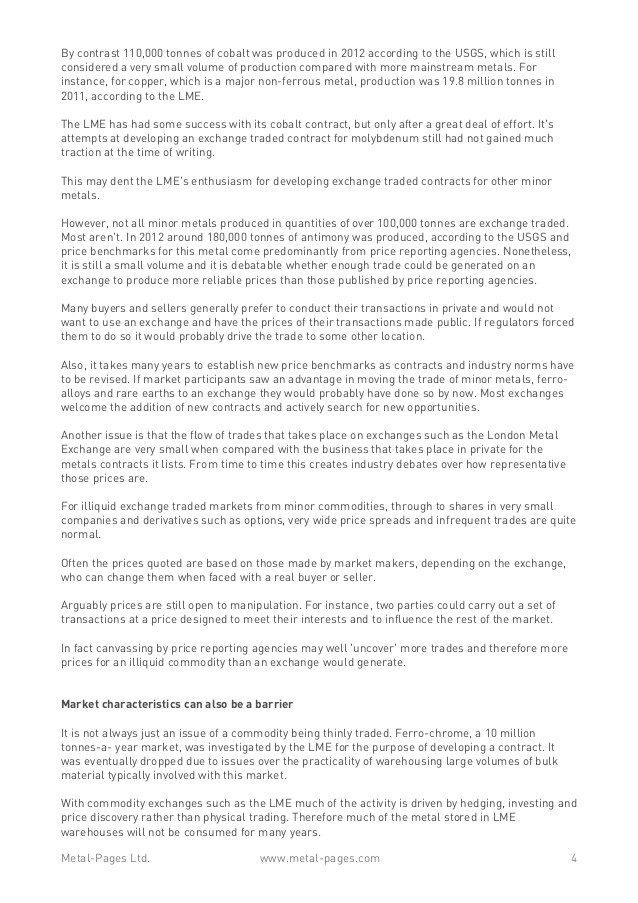Commodities That Move The Markets_4
Post on: 24 Апрель, 2015 No Comment

For European regulators, beginning work on a methodology for calculating commodity derivatives position limits must feel like entering a rabbit hole, where each turn leads to more choices and more tunnels, each leading further and further into the depths of the warren.
To give that some perspective, the European Securities and Markets Authority (ESMA) is required under the revised Markets in Financial Instruments Directive (MIFID II) to draw up a calculation methodology for position limits on physically-settled and cash-settled commodity derivatives, but must consider several separate factors when developing the framework. Each of those, in turn, involve additional considerations, potentially involving further analysis to arrive at the appropriate position limits for each commodity.
Take market size as an example. This is a critical factor, and underpins much of MIFID II regime for commodities. But there is much more to this than meets the eye – not least, what is meant by the term ‘market size’, and how can it best be measured?
In a discussion paper published on May 22, ESMA suggests using deliverable supply in the underlying commodity as the basis for setting position limits on physically settled spot contracts, and possibly other derivatives contracts too. Under one option proposed by ESMA, position limits would be set as a percentage of deliverable supply.
As a first step, it recommends national competent authorities use the data on deliverable supply from the trading venue, and then potentially adjust that to reflect any capacity constraints at certain delivery locations, the accuracy of supply estimates and any expected variations (for instance, due to seasonality). ESMA also recognises that some markets are global, and will require consideration of worldwide dynamics to determine a realistic estimate of deliverable supply.
That last step, however, will prove difficult. There is no shortage of data sources available, but very few, if any, provide a complete and accurate picture of global supply. The US Geological Survey, for instance, provides an estimate of mine production and reserves of rare earth materials . but contains no data on African or South American reserves or production, with the exception of Brazil. (What it does show, though, is that China accounts for more than 90% of reported worldwide production and 39% of reserves, and restricts exports to approximately one third of production.) A more comprehensive global or even regional report on the deliverable supply of rare earths is not expected any time soon.

The Group of 20 leaders are aware of the lack of transparency in physical commodity markets and support a project by the Joint Organisation Data Initiative (JODI) to improve the availability and reliability of data. So far, however, JODI is limited to oil and natural gas, and no similar initiative exits for agricultural commodities, which are arguably most at risk from geopolitical and climatic shocks. This would require those countries in dominant positions – Ivory Coast for cocoa, Brazil for coffee and sugar, Thailand for rice – to share data.
Obtaining an accurate estimate of deliverable supply is clearly important prerequisite for the proposed position-limit regime. Getting it wrong, based on an incorrect assessment of market size, could – as ESMA acknowledges – harm the price discovery process, create barriers to market development, and ultimately result in higher volatility and price spikes.
As such, the industry stands ready to help regulators measure the deliverable supply of those commodities underlying derivatives contracts subject to the position limits. This effort will also require the help of sectorial regulators (for instance, energy regulators for natural gas and power) and market operators.
There is still plenty of debate on whether position limits will actually do what regulators think they will do and curb excessive market volatility. But it’s in no-one’s interests for position limits to be calculated on a flawed basis.














